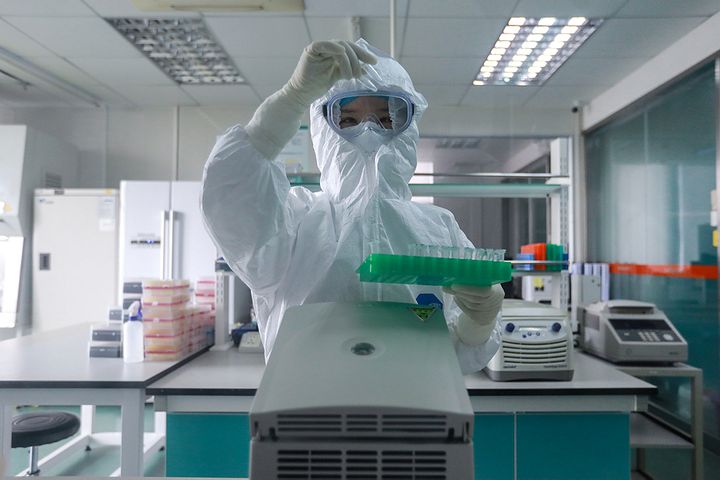 Yicai Global Takes a Look Inside a Shanghai Covid-19 Testing Center
Yicai Global Takes a Look Inside a Shanghai Covid-19 Testing Center(Yicai Global) March 27 -- Shanghai has been doing nucleic acid testing on all people entering the city from abroad since March 24 to tackle imported cases of Covid-19 as the coronavirus becomes increasingly severe outside China. Yicai Global visited Shanghai KingMed Medical Laboratory yesterday to see how staff do the testing.
It has been part of the city's testing program on entrants from overseas since March 17 and is the only third-party medical lab in Pudong New Area to participate.
The team has more than 60 doing sampling, information entry, logistics, inactivation and nucleic acid testing. Team members assigned to sampling work on four shifts, and those in the lab work on three shifts for testing. Machines run 24 hours a day to ensure on-time release of test results.
KingMed Diagnostics Group has dispatched nearly 1,800 staff to do screening and testing at fever clinics. Of the people returning to work and entering China from abroad in 27 provinces and municipalities -- the provinces or including Hubei, Guangdong, Anhui, and Shaanxi and the city of Chongqing -- 1.8 million samples had been tested as of March 25.

Delivery staff bring samples to the lab through a dedicated Covid-19 sample channel.

Lab workers must wear Level 3 protective clothing.

A team member disinfects the sample box again after it arrives in the lab, and then puts the sample in a biosafety cabinet to make them inactivate using 56°C water for 30 minutes.

Samples enter the Covid-19 detection area through a dedicated channel after being inactivated.

An inspector adds polymerase chain reaction solution.

The inspector uses a pipette to aspirate the sample in a centrifuge tube.

After centrifuging the sample, the inspector discards the supernatant with a small sputum suction device and adds release agent in the sample. Then the inspector shakes, mixes, and lets it stand for 10 minutes.

After adding the extracted nucleic acid and reaction solution, the inspector sends it to the amplification room next door through a transfer window.

The inspector puts eight tubes on a real-time PCR instrument for amplification, collects the fluorescence to form an amplification curve, and finally analyzes the data to generate a report.